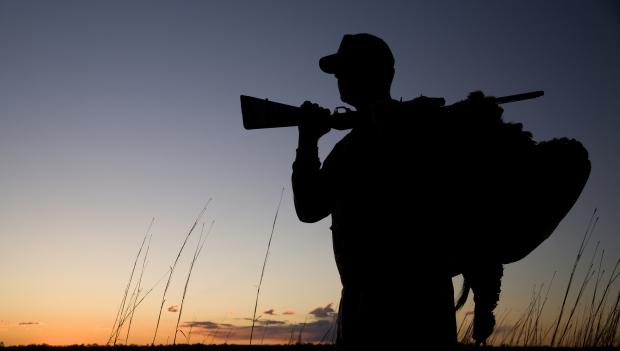
The fall hunting season receives a lot of hype for the variety of game, but spring hunting is not to be overlooked, especially if you have an itch for taking a turkey. Thanks to conservation efforts, the wild turkey has made a comeback in most states across the country and is growing in popularity among hunters. Prepare for the spring hunting season with these tips below, focusing on a turkey hunt.
Recommended: How to Get a Hunting License
1. Know the Regulations & Purchase Your License
Read everything you can find about regulations, laws, and rules of the state where you will hunt. Go to our Fishing and Hunting License webpage and choose a state from the drop-down to learn more about the regulations and purchase licenses and permits.
Typically, you will need identification, a hunter safety card, and a payment method to secure your permit. Please keep in mind that you can face hefty fines for hunting without a permit, in addition to the fact that permitting is needed to regulate game populations and keep hunters safe.
2. Determine Where You Will Stay
Unless you live within a short driving distance from your hunting site, you will need to arrange sleeping accommodations. You can stay at nearby lodging, but the cheapest and often the most convenient option is to camp. Camping also has the advantage of giving you a better idea of the lay of the land, so to speak. You can scout the area, listen for calls, and make other observations that increase your chances of taking home a turkey.
3. Get Your Gear Together Well Before Your Hunt
Take an inventory of your hunting equipment and call gear in advance. Clean and tune your calls and pack two sets of each call type in case you lose or break one. You will also want a decoy, binoculars, and a designated turkey vest to store your key gear.
Plan on bringing a blind for your trip. If you have a blind you have not used in a while, open it up and air it out on a sunny day, and replace any broken rods and fasteners. Also, get topographical maps of the area and study them and mark the locations where you might find your turkeys. Finally, be sure to have the right bow or firearm for your hunt (for turkeys, usually a turkey shotgun), cleaned, and ready to go with plenty of ammunition.
Some Great Places for Spring Hunting
Check out these states for quality spring turkey hunting and more!
Milford State Park, Kansas
Milford State Park is located on the southeastern shore of the state’s largest lake, Milford Reservoir, which is a popular destination for anglers. Here you can catch walleye, crappie, largemouth bass, white bass, catfish, and smallmouth bass. Additionally, there are nearly 20,000 acres of public land surrounding Milford Reservoir on the west side and the upper end, all of which is open to public hunting. Hunters can pursue a variety of game including quail, pheasant, prairie chicken, duck, goose, rabbit, deer, squirrel, and in spring, arguably nothing is better than turkey. The regular turkey hunting season in Kansas runs from mid-April to the end of May, with draws starting in February. Hunters can stay at one of 255 campsites spread along eight campgrounds, including 10 cabins sleeping between four to six people.
Get your Kansas Hunting or Fishing License
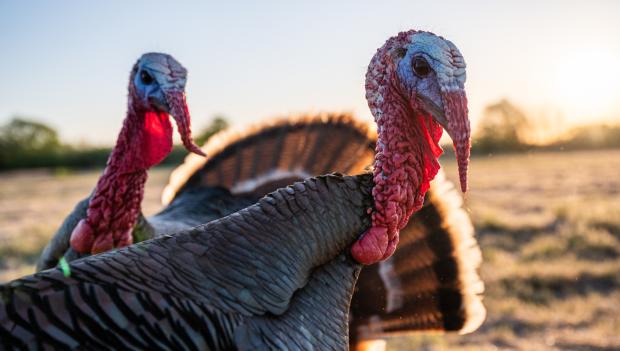
Recommended: Great Kansas Cabin Getaways for Hunting and Fishing
Leroy Percy State Park, Mississippi
The oldest of Mississippi’s state parks, Leroy Percy is beloved for its quintessential deep Southern landscape of artesian springs, cypress trees, and old oak forests cloaked in Spanish moss. As the only state park featuring a wildlife preserve with hunting opportunities, it is also a must for any seasoned or aspiring hunter. Deer, squirrel, duck, and dove are hunted here at various times of the year. In spring, starting in mid-March until May, the park is a favorite for turkey hunters. Please note that regulations for hunting inside the park differ from those of the State of Mississippi. Hunters must register and obtain a copy of the regulations at the park office. Additional hunting areas are located near Leroy Percy State Park. Hunters can stay in one of 27 campsites, including eight cabins.
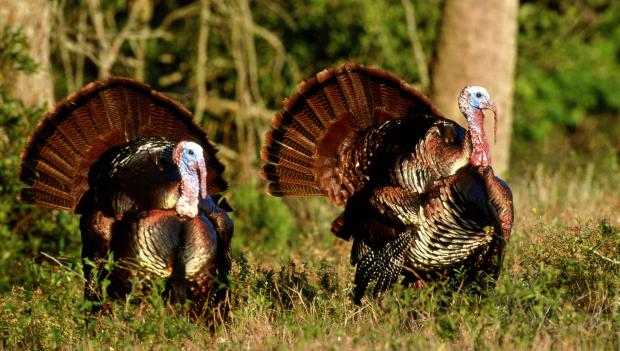
Minnesota
Turkey hunting season in Minnesota runs from mid-April through the end of May and is divided into six one-week hunting periods. The schedule changes annually, so double-check the state’s hunting information for details. If you plan on hunting with a firearm during the first two periods of the season, you will need to enter a lottery to receive a permit. An unlimited number of permits are available for the remaining four hunting intervals.
Minnesota hunters are fortunate to have a vast system of county, state, and federal lands, and the Wildlife Management Area system, all open for hunting, but not all turkey hunting country is equal.
Some of the highest turkey concentrations exist in the oak and aspen forests stretching through central and eastern Minnesota. You will also find plenty of turkeys in western and southwestern timbered river valleys and woodlands. In the northwest, there are localized populations in some wooded areas. Turkeys do not inhabit the conifer forests of the far northeast or agricultural lands. Since Minnesota is such a long state – about 400 miles from north to south – turkey hunting is best in the south at the beginning of the season when the green-up has started by mid-April. By the end of the season, near the end of May, most of the northern lands will have warmed up for good turkey hunting.
Light goose hunting is also permitted in Minnesota from mid-February through April. Light geese include lesser snow geese and Ross’ geese. Blue geese are the same species as lesser snow geese and may be taken.
Get your Minnesota Hunting or Fishing License
Recommended: Spring Fishing and Tackle Preparation
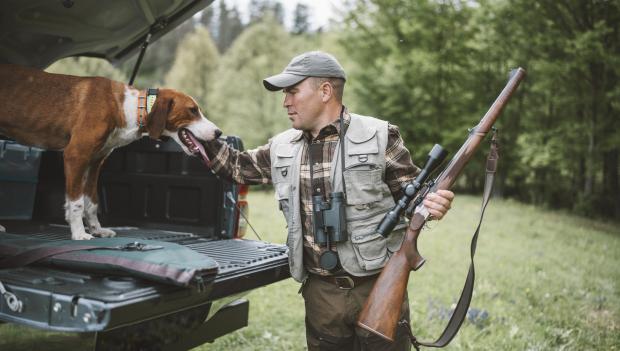
California
California’s stabilized and growing wild turkey population means that the spring turkey season has become one of the more anticipated events on the hunting calendar. The season begins at the end of March and runs through the beginning of May, with additional hunting dates for young hunters and bow hunters. The state also hosts a series of events including youth-only hunts, an archery-only hunting season, and specialized hunts on public lands.
Wild turkeys populate nearly all of California’s 58 counties, with excellent turkey population densities occupying nearly one-fifth of the state. Given the generous three-bird spring limit and a long hunting season, the turkey hunting success rate is at about 40 percent, with about 40,000 turkeys taken annually.
Get your California Wildlife License
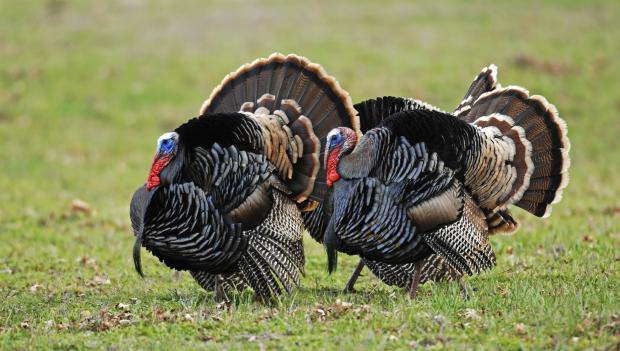
Are you ready for your adventure? Plan your camping trip!
Check with your Local Government Organization
Many policies have been established to counter and control the coronavirus outbreak. State and local officials have been taking decisive action to stop the spread. The policies vary by state, sometimes to a great degree. When you book a reservation, make sure to review the park and state’s latest rules and regulations prior to your visit.
For COVID-19 updates, please visit our Impacted Park List and Reservation Guide for the latest information.